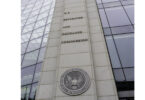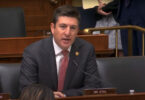Yesterday, the International Telecommunications Union (ITU) announced the release of its ‘toolkit’ of cross-industry blockchain guidelines. The United Nations-run body issued eight reports outlining specifications, use cases, regulations, and standards for distributed ledger technology (DLT).
The ITU has had a DLT focus group, FG DLT, for over two years. It includes participants from various countries and industries, with leading figures from the China Academy of ICT, Brazilian Development Bank, Huawei, and Russia’s Fintech Association. The ITU, as a whole, boasts 193 member states and over 900 organizations. Yesterday it finally revealed its work on blockchain.
“Our aim has been to help industry and government undertake their DLT journeys with greater certainty,” said Wei Kai, focus group Chairman from the China Academy of ICT.
Indeed, the released reports cover DLT definitions, concepts, use cases, reference architecture, suitability assessment, future outlook, and the current standards and regulations landscape. The extensive toolkit isn’t just for telecoms, either. The ITU analyzed around 60 use cases in finance, healthcare, energy, supply chain, security, and the public sector.
Where blockchain is best suited
Suzana Maranhão, DLT FG Vice-Chair representing the Brazilian Development Bank, summarized: “DLT is so broad, it’s very difficult to compare the different use cases. Supply chain, however, looks to be an area where DLT applications could deliver considerable benefit in the near term. The Focus Group received many use cases in this field.”
Many agree that logistics is a natural setting for blockchain solutions. As one of the most active and successful areas of application, the ITU’s conclusion is no surprise. Among other projects, the UN agency looked at pig farm monitoring, a gold ecosystem, and food traceability in Brazil.
As to less active areas: “Use cases involving an exchange of assets have more complex implications, and they are maturing more slowly as a result,” said Maranhão. Here she appears to be agreeing with EY’s head of blockchain, who said in July that financial services is too regulated a sector for many DLT projects.
Standards for all?
For the ITU, its set of definitions and standards is a crucial part of their blockchain work. Having a single set of agreed rules is “empowering”, according to SME participant Skylar Hurwitz. As a UN body with international reach, the ITU’s standards may become widely used. But, as a telecoms-focused organization, it was a little unexpected for its toolkit to aim at all industries.
The two leading telecoms consortiums are the Carrier Blockchain Study Group (CBSG) and the recently announced Communications Blockchain Network (CBN). Both hope to create an interoperable ecosystem, with standards familiar firms ConsenSys and IBM as members of the CBN.






